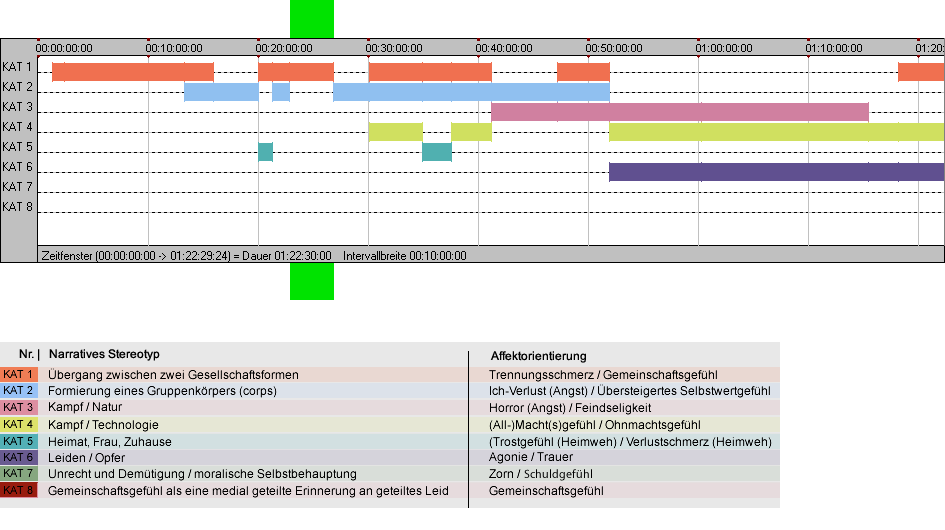Separation from civilian life and the girl*
Classification in categories
- Transition between two social systems


Metadata
Number: 07
Individual analysis: Gung Ho!*
Timecode start: 00:22:50:16
Timecode end: 00:26:48:17
Year of origin: 1943
In the film's dramaturgical structure this scene follows the end of military training, staged by an address by Colonel Thorwald (> Address 3). It creates a clear contrast to the scene that precedes it: The civilian background noises, the music and the dialogue replace the monologue; the interaction of the actors replaces the shot/reverse shot editing. Nevertheless, especially through its comic aspects, the scene is not an antithesis to the excitement of departure staged in the scene before. On the level of staging, it circumvents the pain of separation that the departure of the soldiers might give grounds for.
The sound design proves to be the dominant level of the scene. Its dynamic pattern is at first characterized by the opposition of comical and melodramatic stagings which then becomes a superimposition of the melodramatic expression.
In the beginning against street noise, then—as in screwball comedy—against exaggerated gestures and grotesquely fast talking which seems to put speaking itself on display, the dialogue must gain upper hand as a mode of intimacy between the figures. In the tension between the modes of staging (comical vs. melodramatic), the overstimulation of everyday performance and the pathos of extraordinary feeling are set against one another. Although the pathos of feeling is staged by extracting a voice (Curt) and the slow foxtrot rhythm from the background noises, this audiovision of intimacy remains instable because of the tension of the two modes of staging. It is disturbed first acoustically (a voice enters) and then visually (a third figure is framed). This disturbance is followed—as fits the tension between the two methods of staging—by the renewal of screwball comedy elements.
If at first melodramatic expression is replaced by comical staging(> EMU 1) only to be itself again replaced by the former, afterwards a kind of mishap is staged within the melodramatic expression (> EMU 2). The tension that is founded on the opposition of melodramatic and comical stagings thus yields to the comedy that lies in the failure of the melodramatic staging itself. This failure is accomplished by repetition of the musical stress and the gesture; it counteracts the uniqueness of the pathos of emotion in the kiss scene. The image of a couple of three resolves the tension of the modes of staging created in EMU 1 and the scene receives a comical climax.
The affective course of the scene follows the path described; a shift from tension to comedy. The painful aspects of the drama of separation do not unfold; from the beginning—despite the romantic music—it is stuck in quotidian details (slapstick) and is in the end completely dispersed in a comical staging. ML
Expressive movement units
01 02Materials about the scene
Position of scene in film





